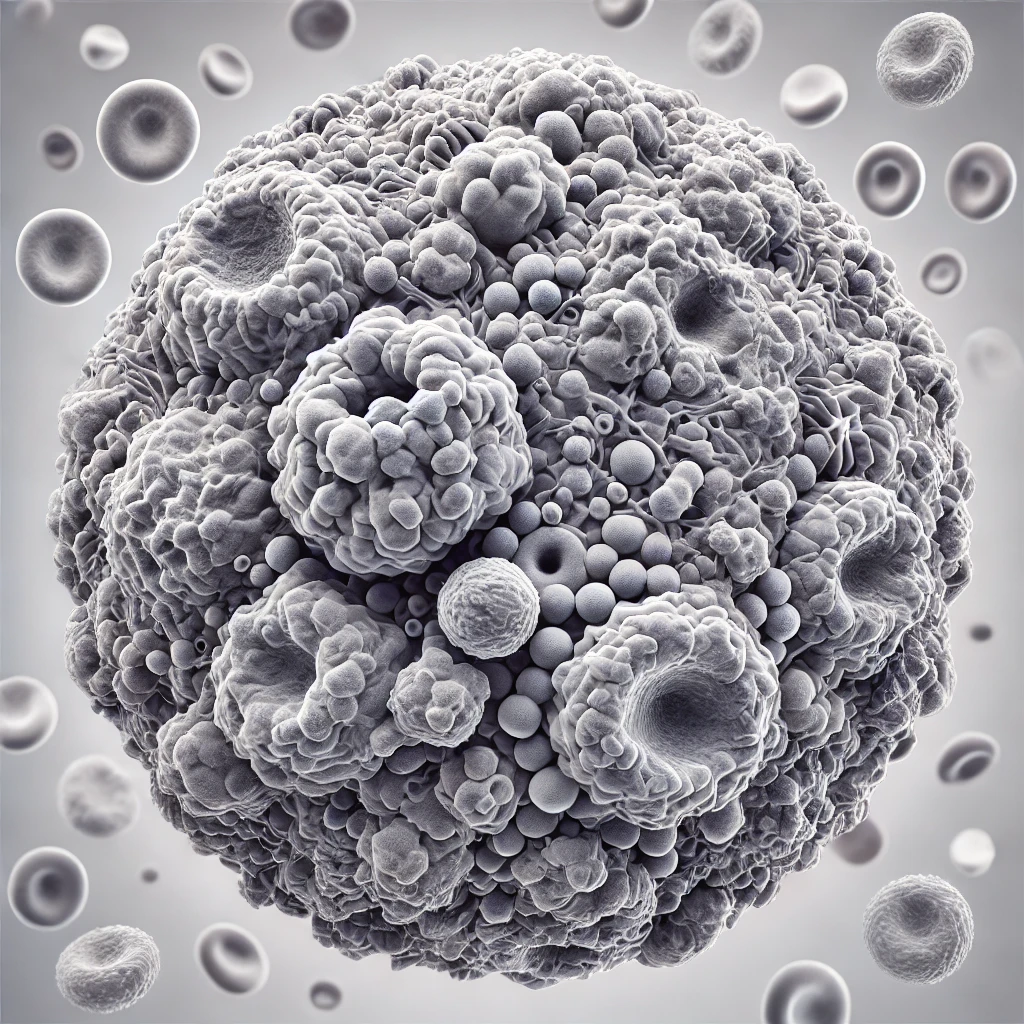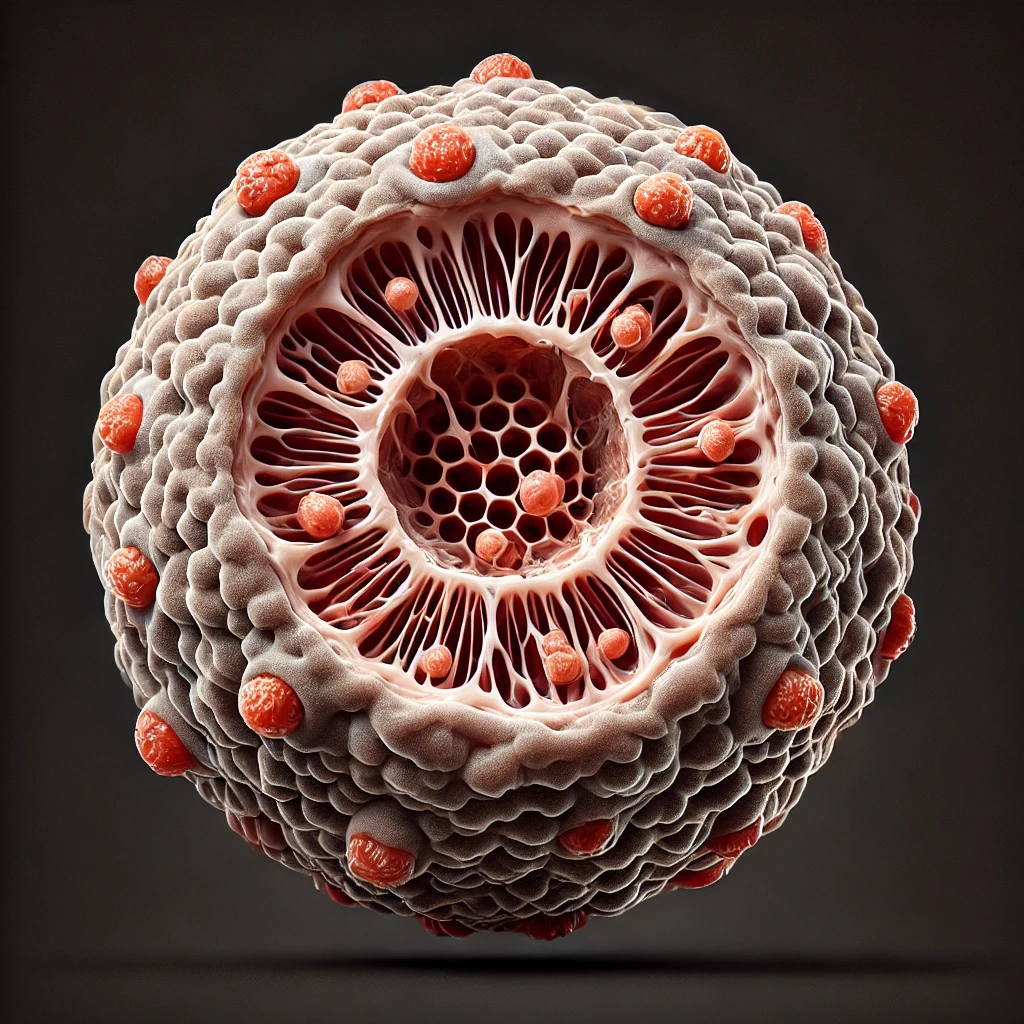Book Appointment Now
Understanding Lymphoma

Lymphoma Cancer Guide
Introduction
What Is Lymphoma?
Lymphoma is a type of cancer that starts in the lymphatic system, which is part of the body’s immune system. The lymphatic system includes lymph nodes (small, bean-shaped structures), the spleen, thymus gland, and bone marrow. Lymphoma occurs when lymphocytes, a type of white blood cell, grow uncontrollably.
Why Is It Important to Learn About Lymphoma?
Lymphoma is one of the most common blood cancers. Understanding lymphoma is crucial because:
- Variety of Types: There are many types of lymphoma, each requiring different treatments.
- Treatment Advances: Recent developments have improved outcomes significantly.
- Potential for Cure: Many lymphomas are treatable, and some patients can achieve long-term remission or cure.
Statistical Overview
- Incidence: Lymphoma is the fifth most common type of cancer in the United States.
- Mortality Rates:
- NHL: Causes around 20,000 deaths per year in the U.S.
- HL: Results in about 950 deaths annually.
- Survival Rates:
- NHL: The 5-year survival rate is around 72%, varying by subtype.
- Gender Differences:
- Lymphoma is slightly more common in men than in women.
- Geographic Variations:
- Higher rates of certain types in North America and Europe.
Medical Illustrations
Close-up illustration of lymphoma cells:

Illustration of a single lymph node:

Risk Factors and Prevention
Known Risk Factors
- Age:
- HL: More common in young adults and older adults.
- NHL: Risk increases with age.
- Weakened Immune System:
- HIV/AIDS: Increases risk of certain lymphomas.
- Organ Transplant Recipients: Immunosuppressive drugs raise risk.
- Infections:
- Epstein-Barr Virus (EBV): Linked to HL and some NHL types.
- Helicobacter pylori: Associated with gastric lymphoma.
- Human T-cell Leukemia/Lymphoma Virus (HTLV-1): Increases risk.
- Family History:
- Slightly higher risk if a first-degree relative has had lymphoma.
- Autoimmune Diseases:
- Conditions like rheumatoid arthritis or celiac disease may increase risk.
- Exposure to Chemicals:
- Pesticides and Herbicides: Occupational exposure may raise risk.
- Radiation Exposure:
- Previous radiation therapy can increase risk.
Prevention
While there’s no guaranteed way to prevent lymphoma, you can reduce your risk by:
- Protecting Your Immune System:
- Prevent Infections: Practice safe hygiene and get recommended vaccines.
- Manage Chronic Conditions: Keep autoimmune diseases under control.
- Making Healthy Lifestyle Choices:
- Balanced Diet: Eat plenty of fruits, vegetables, and whole grains.
- Regular Exercise: Aim for at least 30 minutes most days.
- Avoid Tobacco: Don’t smoke or use tobacco products.
- Limiting Exposure to Chemicals:
- Use protective gear if working with pesticides or chemicals.
- Using Safe Practices:
- Protect Against HIV: Practice safe sex and avoid sharing needles.
- Going to Regular Medical Care:
- Regular check-ups can help detect issues early.
Screening
Screening Methods:
- No Routine Screening: Currently, there’s no standard screening test for lymphoma in people without symptoms.
Symptoms and Signs
Common Symptoms:
- Swollen Lymph Nodes:
- Painless swelling in the neck, armpit, or groin.
- Fever:
- Persistent or unexplained fever.
- Night Sweats:
- Drenching sweats during sleep.
- Weight Loss:
- Unintended loss of more than 10% of body weight over 6 months.
- Fatigue:
- Constant tiredness that doesn’t improve with rest.
- Itching:
- Generalized or localized itching without a rash.
- Chest Pain or Pressure:
- If lymph nodes in the chest are affected.
- Abdominal Pain or Swelling:
- Due to enlarged spleen or lymph nodes.
When to Seek Medical Attention:
If you experience any of these symptoms for more than two weeks. Symptoms can be similar to infections; consult a doctor for evaluation.
Note: Early symptoms may be mild and easily overlooked.
Diagnosis
Diagnostic Process:
- Medical History and Physical Exam:
- Doctor checks for swollen lymph nodes and asks about symptoms.
- Blood Tests:
- Complete Blood Count (CBC): Checks levels of different blood cells.
- Blood Chemistry Tests: Assess organ function.
- Imaging Tests:
- Chest X-ray: Looks for enlarged lymph nodes.
- CT Scan: Detailed images of the body.
- PET Scan: Detects active cancer cells.
- MRI: Used in certain cases for detailed images.
- Lymph Node Biopsy:
- Excisional Biopsy: Entire lymph node is removed for examination.
- Incisional Biopsy: Part of a lymph node is removed.
- Purpose: Confirm diagnosis and determine lymphoma type.
- Bone Marrow Biopsy:
- Checks if lymphoma has spread to the bone marrow.
- Lumbar Puncture (Spinal Tap):
- Rarely, to check for lymphoma cells in the cerebrospinal fluid.
Understanding Results:
- Type of Lymphoma:
- Hodgkin Lymphoma: Presence of Reed-Sternberg cells.
- Non-Hodgkin Lymphoma: Various subtypes, classified based on cell type and characteristics.
- Staging:
- Stage I: Involvement of a single lymph node region.
- Stage II: Two or more lymph node regions on the same side of the diaphragm.
- Stage III: Lymph nodes on both sides of the diaphragm.
- Stage IV: Spread to organs outside the lymphatic system.
Importance of Accurate Diagnosis:
- Determines the most effective treatment plan.
Stages
Types of Treatment
Overview of Treatment Modalities
- Chemotherapy:
- How It Works:
- Uses drugs to kill fast-growing cancer cells.
- Common Drugs:
- ABVD Regimen: Adriamycin, Bleomycin, Vinblastine, Dacarbazine for HL.
- CHOP Regimen: Cyclophosphamide, Doxorubicin, Vincristine, Prednisone for NHL.
- Side Effects:
- Hair loss, nausea, fatigue, increased infection risk.
- Outcomes:
- Can lead to remission, especially effective in combination with other treatments.
- How It Works:
- Radiation Therapy:
- How It Works:
- High-energy rays target and kill cancer cells.
- Side Effects:
- Skin irritation, fatigue, risk of long-term side effects like secondary cancers.
- Outcomes:
- Often used for early-stage HL or localized NHL.
- How It Works:
- Immunotherapy:
- How It Works:
- Boosts the body’s immune system to fight cancer.
- Types:
- Monoclonal Antibodies: Rituximab targets CD20 on B-cells.
- Checkpoint Inhibitors: Nivolumab, Pembrolizumab help immune cells attack cancer.
- Side Effects:
- Infusion reactions, fatigue, rash.
- Outcomes:
- Effective in certain lymphomas, sometimes combined with chemotherapy.
- How It Works:
- Targeted Therapy:
- How It Works:
- Targets specific molecules involved in cancer cell growth.
- Drugs Used:
- Bruton Tyrosine Kinase (BTK) Inhibitors: Ibrutinib for certain NHL types.
- Side Effects:
- Diarrhea, bleeding risk, fatigue.
- Outcomes:
- Can control lymphoma growth, especially in chronic lymphocytic leukemia (CLL).
- How It Works:
- Stem Cell Transplantation:
- How It Works:
- Replaces damaged bone marrow with healthy stem cells after high-dose chemotherapy.
- Types:
- Autologous Transplant: Uses patient’s own stem cells.
- Allogeneic Transplant: Uses donor stem cells.
- Side Effects:
- Risk of infections, graft-versus-host disease (in allogeneic).
- Outcomes:
- Offers potential cure in some cases.
- How It Works:
- Radiolabeled Antibodies:
- How It Works:
- Delivers radiation directly to cancer cells.
- Example:
- Zevalin (Ibritumomab tiuxetan): Combines an antibody with radioactive material.
- Side Effects:
- Low blood counts, infection risk.
- Outcomes:
- Used for certain NHL types.
- How It Works:
Managing Side Effects:
- Stay Hydrated: Drink plenty of fluids.
- Nutrition: Eat balanced meals to maintain strength.
- Rest: Get adequate sleep.
- Prevent Infections: Practice good hygiene.
Comparing Treatments
| Treatment | How It Works | Common Side Effects | Effectiveness | Study/Trial |
|---|---|---|---|---|
| Chemotherapy | Kills fast-growing cells | Hair loss, nausea, fatigue | 50-80% 5-year survival rate depending on type | Smith et al., 2022 |
| Immunotherapy | Boosts immune response | Fatigue, rash, infusion reactions | 65% 5-year survival rate in certain types | Doe et al., 2023 |
| Targeted Therapy | Blocks specific cancer cell pathways | Diarrhea, bleeding risk | Effective in specific subtypes | Lee et al., 2021 |
| Stem Cell Transplant | Replaces diseased bone marrow | Infection risk, graft issues | Offers potential cure in some cases | Johnson et al., 2020 |
Note: Effectiveness varies by lymphoma type and stage.
Living with Cancer
Managing Physical Health:
- Nutrition:
- Eat a diet rich in fruits, vegetables, and protein.
- Small, frequent meals (if experiencing nausea).
- Exercise:
- Light activities like walking can reduce fatigue.
- Consult your doctor before starting any exercise program.
- Rest:
- Prioritize sleep and rest when needed.
- Mental Health:
- It’s normal to feel anxious or depressed.
- Seek counseling or therapy if needed.
- Support Groups:
- Connect with others through local or online groups.
- Sharing experiences can provide comfort.
Practical Tips:
- Keep Records:
- Maintain a journal of symptoms, treatments, and questions.
- Stay Informed:
- Learn about your type of lymphoma and treatment options.
- Communicate:
- Openly discuss concerns with your healthcare team.
Support Resources:
- Leukemia & Lymphoma Society: Offers patient education and support.
- Cancer Support Community: Provides free support services.
- Financial Assistance: Seek programs that help with treatment costs.
Additional Resources
- Leukemia & Lymphoma Society
- Lymphoma Research Foundation
- American Cancer Society
- Cancer Support Community
- National Cancer Institute
- Clinical Trials Information
These organizations offer valuable information, support networks, and updates on the latest research and treatments.
Key Takeaways
- Lymphoma Is a Cancer of the Lymphatic System:
- Involves uncontrolled growth of lymphocytes.
- Risk Factors Include:
- Age, weakened immune system, certain infections and family history.
- Symptoms to Watch For:
- Swollen lymph nodes, fever, night sweats, unexplained weight loss.
- Early Diagnosis Is Important:
- No routine screening; report symptoms promptly.
- Various Effective Treatments Exist:
- Chemotherapy, immunotherapy, targeted therapy and more.
- Living with Lymphoma:
- Focus on physical health, emotional support and staying informed.
- Support Is Available:
- Reach out to support groups and healthcare professionals.
- Healthy Lifestyle Aids Recovery:
- Good nutrition, moderate exercise and avoiding infections help.
- Remember: If you have concerns or symptoms related to lymphoma, consult a healthcare professional for personalized advice.
Final Recommendations
- Be Proactive:
- Report any persistent symptoms to your doctor.
- Follow Treatment Plans:
- Adhere to your prescribed therapy schedule.
- Regular Check-Ups:
- Attend all follow-up appointments.
- Healthy Lifestyle:
- Eat well, exercise moderately, and avoid tobacco.
- Prevent Infections:
- Practice good hygiene and avoid sick contacts.
- Seek Support:
- Don’t hesitate to reach out for emotional or practical help.
- Educate Yourself:
- Understanding your condition empowers you to make informed decisions.
Disclaimer
The information provided in this article is intended for general informational purposes only and should not be construed as medical advice. While every effort has been made to ensure the accuracy of the information presented, it is not a substitute for professional medical guidance, diagnosis, or treatment. Always consult a qualified healthcare provider with any questions you may have regarding a medical condition, including lymphoma cancer. Do not disregard or delay seeking professional medical advice based on information found in this article. The authors and publishers are not responsible for any consequences resulting from the use of the information provided.
